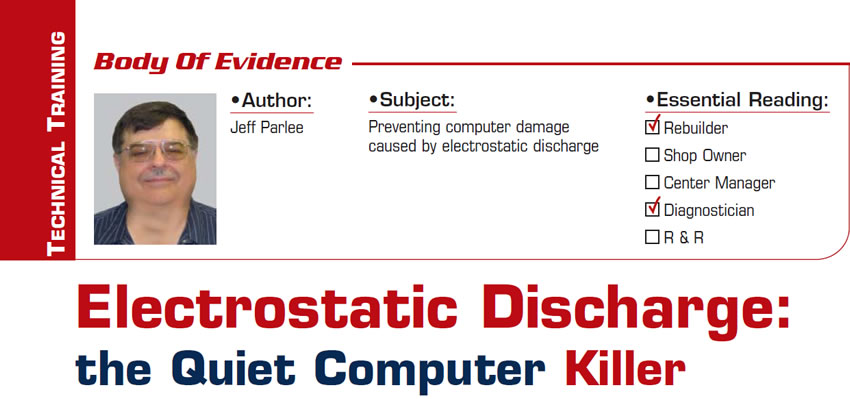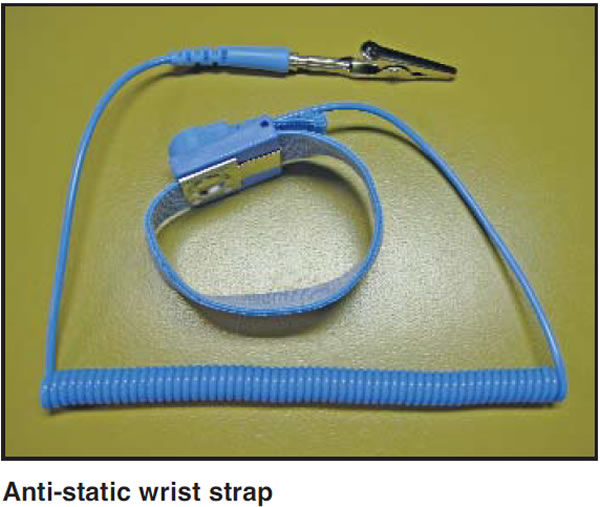
Body of Evidence
- Subject: Preventing computer damage caused by electrostatic discharge
- Essential Reading: Rebuilder, Diagnostician
- Author: Jeff Parlee
Electrostatic discharge (ESD) is defined as a sudden and momentary flow of electric current between two objects of different electrical potentials.
At one time or another, everyone has walked across a rug and reached out for a door and gotten a little shock. This was an electrostatic discharge. There are many ways to generate electricity in our bodies; just a few examples are removing a coat or sweater, walking across a room, sliding across a car seat, or handling plastics or plastic foam. Depending on the humidity of the day, you may feel a shock from the electrostatic discharge.

Many of the electronic components that make up a computer can be damaged by as little as 10 volts. It takes about 380 volts to create a spark that will jump an air gap from one object to another. The spark is what we feel. You can prove this to yourself the next time you remove a sweater and you feel as if the hairs on your arm are standing up. Pull a metal key out of your pocket, hold on to one end tightly and touch the other end to a ground. You will see and maybe hear the snap of the spark, but you will feel no shock. That is because the spark jumped between the key and ground, not your skin to ground.
The point is that a computer can be damaged by an electrostatic discharge that we may not feel. The damage that ESD can do to the computer depends on the amount of current and the pins or circuits that the current is flowing through. You may totally kill the computer, create false codes or just start some damage and severely shorten the life of the computer. Many transmission control modules (TCMs) are now attached to the valve body. If the TCM becomes damaged, the TCM and valve body are available for purchase only together as a unit in most instances. Buying this set from the dealer can be quite expensive.
The TCM must be safely removed before you service the valve body and then reinstalled once you have overhauled the valve body.
Here are some precautions that can help you to avoid an ESD:
- Never touch the connector pins on a TCM or an engine control module. For some TCMs you can buy a plastic cap that will snap onto the TCM connector and cover the pins to avoid accidental touching of the connector pins.
- Never touch the electrical connectors for the solenoids on a TCM.
- Use an anti-static work mat on the bench. This is a good barrier between the bench and the TCM.
- The use of an anti-static wrist strap is highly recommended. When used properly, an anti-static wrist strap will prevent the buildup of static electricity on your body.
- You can buy special red anti-static plastic bags. Place the TCM in the red bag to protect it from unwanted ESD while the valve body is being overhauled. If you buy a new valve body and TCM assembly it usually will be inside a red anti-static bag. You can save the bag for later use.
You can find an anti-static wrist strap with grounding cord at most electronics stores. They are inexpensive – many under $10 – and are cheap insurance against electrostatic discharge. Technology is always evolving, and today’s technology makes the anti-static wrist strap a must-have for every toolbox, including the R&R technician’s.

Jeff Parlee is director of product support at ValveBody Xpress.













